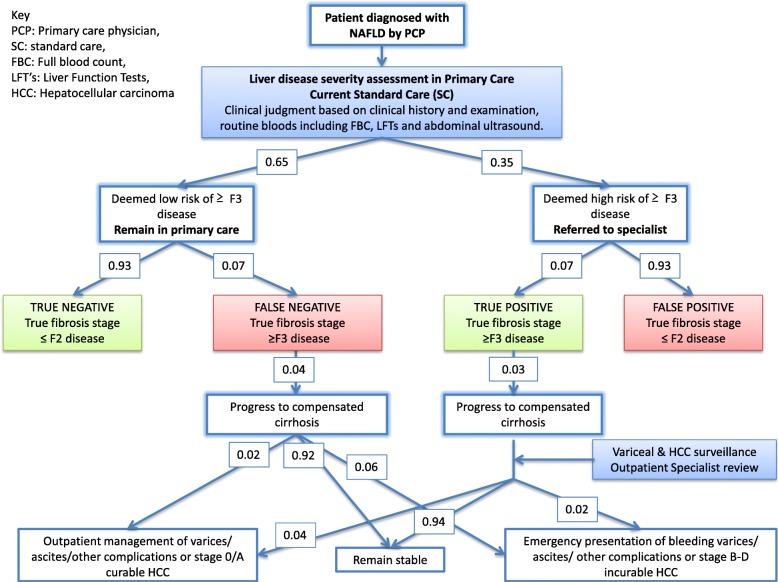Fig. 1.
Schematic simulating current ‘standard of care’ patient journey. Simplified simulated journey of a patient with NAFLD through the healthcare system after primary care assessment using standard of care over a 1-year timeframe (see Table 1 and Table 2 for references). The diagnostic performance of the primary care assessment has four outcomes - 1) ‘True positive’; Patients deemed to be at high risk for advanced fibrosis subsequently confirmed as having ≥ F3 fibrosis after specialist assessment. Patients will be actively managed in secondary care (including consideration for clinical trials). Patients with cirrhosis will be enrolled in pathways of care that improve outcomes through targeted screening and treatment for portal hypertension and hepatocellular carcinoma (HCC). 2) ‘True negative’; Patients deemed to be at low risk for advanced fibrosis found to have ≤ F2 disease. These patients are unlikely to suffer morbidity from their liver disease. Management in primary care should be focussed on managing reversible metabolic disorders. 3) ‘False positive’; Patients deemed to be at high risk for advanced fibrosis in primary care but found to have ≤ F2 fibrosis. The pathway can be considered to have failed this group of patients, whom can be managed effectively in primary care with weight loss and exercise. 4) ‘False negative’; Patients deemed to be at low risk for advanced fibrosis who have ≥ F3 fibrosis. This cohort of patients have been falsely reassured and represent a failure of the pathway as they remain in primary care unless they present with complications of CLD if their disease progresses, at which point interventions are increasingly limited

